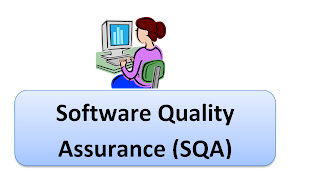Software Quality Assurance in software engineering

On this blog you can post about most of the engineering related topics in very simple language. It computer science programs or management systems. Can read and understand in very easy language. Here you can know the code of different types of programs. You can learn about different computer languages. And you will also get information related to the operating system here. All you have to do is one click and your questions will be answered immediately. All about learning and knowledge provide...

A for loop is a more efficient loop structure in 'C' programming. The general structure of for loop syntax in C is as follows:
for (initial value; condition; incrementation or decrementation )
{
statements;
}
A do...while loop in C is similar to the while loop except that the condition is always executed after the body of a loop. It is also called an exit-controlled loop.
Syntax of do while loop in C programming language is as follows:
do {
statements
} while (expression);As we saw in a while loop, the body is executed if and only if the condition is true. In some cases, we have to execute a body of the loop at least once even if the condition is false. This type of operation can be achieved by using a do-while loop.
In the do-while loop, the body of a loop is always executed at least once. After the body is executed, then it checks the condition. If the condition is true, then it will again execute the body of a loop otherwise control is transferred out of the loop.
Similar to the while loop, once the control goes out of the loop the statements which are immediately after the loop is executed.
The critical difference between the while and do-while loop is that in while loop the while is written at the beginning. In do-while loop, the while condition is written at the end and terminates with a semi-colon (;)
A while loop is the most straightforward looping structure. While loop syntax in C programming language is as follows:
while (condition) {
statements;
}
It is an entry-controlled loop. In while loop, a condition is evaluated before processing a body of the loop. If a condition is true then and only then the body of a loop is executed. After the body of a loop is executed then control again goes back at the beginning, and the condition is checked if it is true, the same process is executed until the condition becomes false. Once the condition becomes false, the control goes out of the loop.
After exiting the loop, the control goes to the statements which are immediately after the loop. The body of a loop can contain more than one statement. If it contains only one statement, then the curly braces are not compulsory. It is a good practice though to use the curly braces even we have a single statement in the body.
In while loop, if the condition is not true, then the body of a loop will not be executed, not even once. It is different in do while loop which we will see shortly.
Comments
Post a Comment